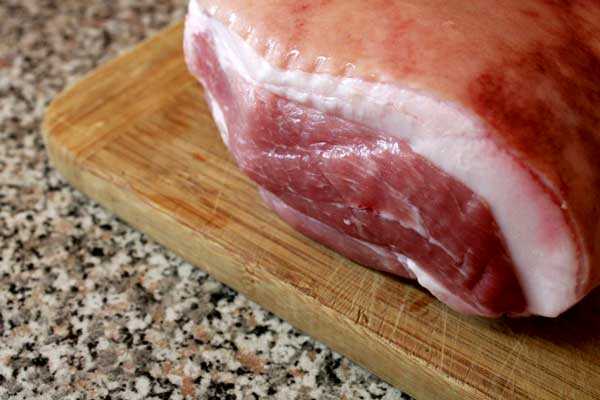
O ranço ou a rancidez oxidativa é a principal responsável pela deterioração de alimentos ricos em lipídios, como é o caso das carnes, pois resulta em alterações indesejáveis de cor, sabor, aroma e consistência do alimento. A oxidação lipídica envolve uma série extremamente complexa de reações químicas, que ocorre entre o oxigênio atmosférico e os ácidos graxos insaturados dos lipídios.
A gordura está naturalmente presente nas carnes e pode ser acrescida em algumas formulações, tanto homogeneizada como nas salsichas, mortadelas ou linguiças cozidas emulsionadas quanto em pedaços maiores, como nos salames. Mas tanto a gordura presente nas carnes quanto a adicionada nas formulações sofrem processos de oxidação.
A reação do oxigênio com os lipídios é o processo mais comum que leva à oxidação, é um processo chamado de auto-oxidação. A oxidação forma compostos aromáticos voláteis que são percebidos como off-flavours. Os off-flavors detectados dependem da composição em ácido graxo e do grau de oxidação, embora as condições de oxidação também possam afetar os compostos voláteis produzidos e as propriedades sensoriais. Os aldeídos geralmente contribuem para os off-flavours que se desenvolvem durante a oxidação lipídica.
Além do aroma rançoso, a oxidação dos lipídios pode causar alterações na coloração devido a reações com os pigmentos, especialmente os carotenóides, com os intermediários reativos, chamados radicais livres, que são formados durante a oxidação lipídica. Os radicais livres também podem levar a uma redução da qualidade nutricional, por reagirem com vitaminas.
É importante controlar a luz nos produtos cárneos?
Sim, a chamada foto-oxidação, que ocorre principalmente em produtos que passarão por períodos longos de maturação, cura ou exposição para venda. A foto-oxidação, nesse caso, a excitação dos lipídios ou a excitação do oxigênio pode ocorrer na presença de luz e de sensibilizantes. A foto-oxidação é caracterizado pela transferência do átomo de hidrogênio ou pela transferência de elétrons, produzindo radicais livres ou íons de radicais livres. A auto-oxidação pode então prosseguir.
Os antioxidantes auxiliam na prevenção do ranço?
Os antioxidantes em alimentos podem ser definidos como qualquer substância capaz de adiar, retardar ou impedir o desenvolvimento de sabor rançoso ou outras deteriorações aromáticas em alimentos, decorrendo da oxidação. Os antioxidantes retardam o desenvolvimento de off-flavours.
Os antioxidantes podem inibir ou retardar a oxidação pela eliminação de radicais livres(ação sequestrante), sendo neste caso descrito como um antioxidante primário ou por um mecanismo que não envolve uma atividade sequestrante direta de radicais livres, caso em que o composto é um antioxidante secundário.
Os antioxidantes secundários agem através de uma variedade de mecanismos, incluindo a ligação de íons metálicos, eliminação/seqüestro de oxigênio, conversão de hidroperóxidos em espécies não-radicais, absorção de radiação UV ou desativação de oxigênio singlete. Normalmente, os antioxidantes secundários só apresentam atividade antioxidante quando um segundo componente menor está presente. Isso pode ser observado no caso de agentes seqüestrantes, como o ácido cítrico, que são eficazes apenas na presença de íons metálicos, e no caso dos agentes redutores, como o ácido ascórbico, que são eficazes na presença de tocoferóis ou outros antioxidantes primários.
Quais fatores influenciam a oxidação nos alimentos?
- Quantidade de oxigênio presente, uma vez que a rancidez oxidativa não ocorre na ausência de O²;
- Composição da gordura, ou seja, o tipo de ácido graxo insaturado e o grau de saturação têm influência significativa na oxidação (os ácidos linoléico e linolênico oxidam-se 64 e 100 vezes mais rápido do que o ácido oléico, respectivamente);
- Exposição à luz, sendo que a mesma acelera as reações de oxidação e, por isso, na medida do possível, deve-se evitar sua incidência direta nos alimentos suscetíveis a oxidação;
- Temperatura de armazenamento, quanto maior a temperatura, maior será a velocidade com que a reação se desenvolve. A cada aumento de 10ºC na temperatura, a reação do oxigênio com a gordura insaturada duplica.
- Presença de catalisadores, chamados de pró-oxidantes, os quais aceleram a reação de oxidação (metais e grupo heme damioglobina);
- Atividade de água(aw) dos alimentos, sendo que a presença de água livre aumenta a atividade catalítica dos metais, portanto, o risco de oxidação aumenta a medida que atividade de água aumenta
Referências
ADITIVOS $ INGREDIENTES – insumos.com.br/aditivos_e_ingredientes/materias/209.pdf
FOOD INGREDIENTS BRASIL Nº 29 – 2014 – revista-fi.com.br/upload_arquivos/201606/2016060396904001464897555.pdf



